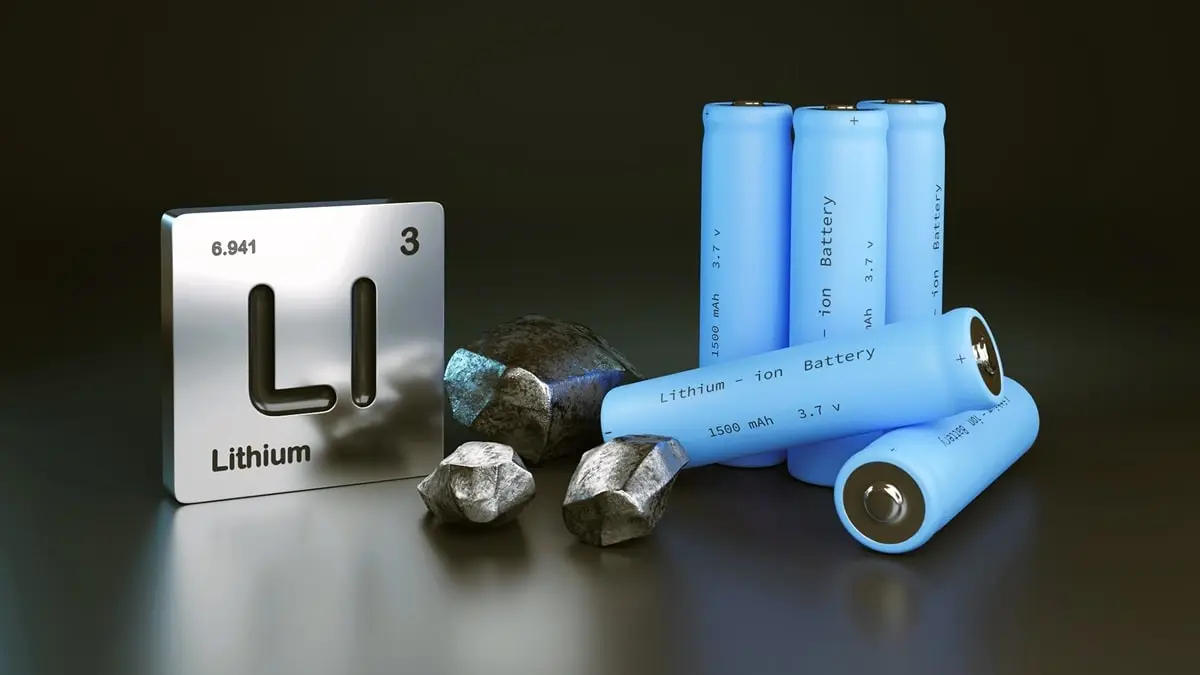Lithium-ion (Li-ion) batteries are ubiquitous in our daily lives, powering everything from smartphones to electric vehicles. Despite their widespread use, many people wonder whether these batteries can degrade or “go bad” if left unused for long time.

This article mainly focuses into the intricacies of lithium-ion batteries, their lifespan, safe temperatures, and the factors influencing their degradation, even when not in use.
Understanding Lithium-Ion Batteries.
To comprehend why lithium-ion batteries can degrade, it’s essential to understand their basic structure and function. A lithium-ion battery consists of:
- Anode – Negative Electrode: Usually made of graphite.
- Cathode – Positive Electrode: Typically made of a lithium metal oxide.
- Electrolyte: A lithium salt in a solvent that allows lithium ions to move between the anode and cathode. We can also say it a medium, with the help of which energy generates.
- Separator: A barrier that prevents the anode and cathode from touching while allowing ion flow. It also helps saving the battery from getting damaged.
When a lithium-ion battery charges, lithium ions move from the cathode to the anode. During discharge, these ions travel back to the cathode, generating electrical energy.
Do Lithium-Ion Batteries Degrade Over Time?
Yes, lithium-ion batteries can degrade over time, even if they are not used.
This degradation occurs due to several factors:
Self-Discharge:
- Explanation: Lithium-ion batteries experience a phenomenon known as self-discharge, where they lose charge over time even when not in use.
- Impact: Self-discharge can lead to deep discharge states if the battery is left unused for long periods, which can harm the battery’s health.
Electrolyte Decomposition:
- Explanation: The electrolyte in a lithium-ion battery can decompose over time, especially at higher temperatures. This decomposition leads to the formation of gases and the breakdown of the battery’s internal components.
- Impact: Decomposed electrolyte reduces the battery’s capacity and can lead to swelling or leakage. This is the main reason why cheap quality battery swells and leak early.
Formation of Solid Electrolyte Interphase (SEI):
- Explanation: When a lithium-ion battery is charged for the first time, a layer called the solid electrolyte interphase (SEI) forms on the anode. This layer is essential for battery function but continues to grow over time.
- Impact: The growth of the SEI layer consumes lithium ions, reducing the battery’s capacity and efficiency. Although it is a negative point, but it happens over a mid-to-long time.
Temperature Effects:
- Explanation: Temperature plays a significant role in the degradation of lithium-ion batteries. High temperatures can accelerate electrolyte decomposition and SEI layer growth. Ultimately, it reduces the overall lifecycle of the battery.
- Impact: Storing batteries in hot environments can significantly reduce their lifespan. Conversely, extremely low temperatures can also harm battery health by causing the electrolyte to become less conductive.
- While charging (fast), the temperate should not reach above 45°C (113°F). Aim for 36°C (96.8°F) while charging (slow) and discharging at the same time, like inverter batteries.
- Safe storage temperatures (universal) range from 0°C (32°F) to 40°C (104°F).
Mitigating Degradation in Unused Lithium-Ion Batteries.
To prolong the lifespan of lithium-ion batteries when not in use, consider the following tips:
Store at Partial Charge:
- Explanation: Storing batteries at a full charge can accelerate capacity loss. Manufacturers typically recommend storing lithium-ion batteries at around 50% charge.
- Practice: Charge your battery to about 50% before long-term storage.
Control Storage Temperature:
- Explanation: As mentioned, temperature significantly impacts battery health.
- Practice: Store batteries in a cool, dry place. Avoid extreme temperatures, ideally between 15°C to 25°C (59°F to 77°F).
Avoid Deep Discharge:
- Explanation: Allowing a battery to discharge completely and remain in that dead state can cause irreversible damage. If it happens frequently then battery dies quickly.
- Practice: Check stored batteries periodically and recharge them if their voltage drops significantly. Do not leave a battery in dead state, try to leave at least 40% charge.
Use Protective Storage:
- Explanation: Storing batteries in protective cases can prevent physical damage and short circuits. If the battery bank is made up of small-small batteries, check for fittings.
- Practice: Use storage containers designed for batteries to keep them safe from physical harm. Also make sure battery bank is securely wired and no chance of short circuit.
The Impact of Battery Chemistry and Technology.
Advancements in battery technology and chemistry also play a role in reducing degradation. Newer battery formulations are designed to be more stable and less prone to issues like electrolyte decomposition and SEI layer growth.
Furthermore, battery management systems (BMS) in modern devices help optimize charging and discharging cycles, prolonging battery life.
Conclusion.
In conclusion, lithium-ion batteries do degrade over time, even when not in use.
Factors such as self-discharge, electrolyte decomposition, SEI layer growth, and temperature effects all contribute to this degradation.
However, by understanding these factors and following best practices for storage, you can significantly extend the lifespan of your unused lithium-ion batteries.
As technology continues to advance, future batteries may offer even greater stability and longevity, making our reliance on these essential power sources even more sustainable.
Leave a Reply